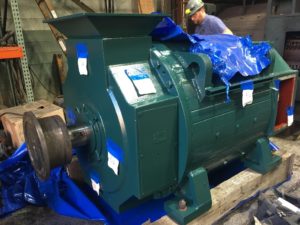Decatur Industrial wants to wish everyone a Merry Christmas! Thank you for continuing to support us and put your trust in us.
Archives for 2021
Manpower Challenges? Decatur Industrial Has the Solution.
Not surprisingly, the Covid-19 pandemic is still affecting labor force participation and unemployment among American workers 18 months after its onset. Today’s labor shortage remains a major issue for our customers today, as well as ensuring they have the coverage needed to run their facility if employees are quarantined.
One of those customers found themselves lacking primarily in skilled millwrights. Knowing that it takes a lot of time to find that kind of talent, they turned to Decatur Industrial to fill the gaps. This facility required a planned daily outage once a week. However, they had been consistently short on manpower to accomplish the job. As a partner to this customer, we offered our millwright services so they could meet their plant performance goal. These services started at the height of the pandemic and continue to this very day.
To date, we have logged over 40, 40- hour weeks of millwright work at the customer site. Our team enjoys knowing that our efforts have helped enabled the plant to hit production numbers.
Decatur Industrial has the talent on our team to help customers keep on schedule with items they don’t have the manpower to achieve. Contact us today to see how we can help.

Testing Synchronous Machines
When testing synchronous machines, one should consider the control circuitry involved. Baseline current tests of both armature and field should be taken when the machine is operating in nominal condition or when it’s first installed. Analysis of the current data should include a thorough review of the time domain waveforms to ensure there is full wave rectification (i.e. all rectifiers are working) in the field circuit. Baseline voltage and current measurements through a start-up and synchronization should also be performed to analyze the performance of the amortisseur windings and synchronizing regulation. Assuming a constant load, a steady state analysis of an RMS enveloped current on both the armature and field should be performed to ensure there is no abnormal variation in current. Should you need additional information on testing synchronous machines, please contact PdMA technical support for assistance.
Synchronous motors are commonly medium/high voltage machines. For additional test considerations read Medium/High Voltage Testing Application Note at http://www.pdma.com/PdMA-application-notes.php.
Motor 101 Series – Webinar Starts October 13
Presented by Jeff Meyer: Director of Industrial Solutions
- Wednesday, October 13 at 1: https://attendee.gotowebinar.com/register/7373648650422933515
- Wednesday, October 20 at 1: https://attendee.gotowebinar.com/register/9045750749572606219
- Wednesday, October 27 at 1: https://attendee.gotowebinar.com/register/6029732080466777355
– Describe the construction of a squirrel cage AC Motor.
– Identify NEMA enclosures.
– Review a motor nameplate, understand and identify for replacements.
Ambient and how it affects a motor?
Service Factor, what is it there for?
NEMA Designs and how they apply to your work place.
Design Codes, can your motor be special?
– IEC (International Electrotechnical Commission) motors.
What do I do with these?
– Variable Frequency Nameplates and are they special motors?
How a DC to AC Retrofit Saved this Customer Money and Time

Converting from DC to AC brings many benefits. This customer understood that the total cost of a new AC motor and new VFD was less than the cost for a typical DC motor rebuild. That alone was a driving force in their decision. However, that’s just ONE of the benefits in this case study.
- LESS EQUIPMENT
- The AC motor does not require a tachometer for speed control in this application so there is a reduction in cost and one less major component leading to greater reliability.
- LESS MAINTENANCE
- The maintenance on the new AC motor and Drive is fraction of the DC Motor and DC Drive, a reduction of 85% to 90% less maintenance.
- GREATER RELIABILITY
- The AC motor will have far greater meantime between failure (MTBF) due to reduced components, circuits/windings, and wear/consumable components.
- BETTER SAFETY
- We were able to design the motor as vertical, so it has proper lifting provisions to stabilize the machine during install. This greatly aids safety for the technicians.
- INCREASED MOBILITY
- The AC motor weighs less than 60% of the DC motor so it is much easier to maneuver.
Click on photos to enlarge.
- 1
- 2
- 3
- 4
- Next Page »

